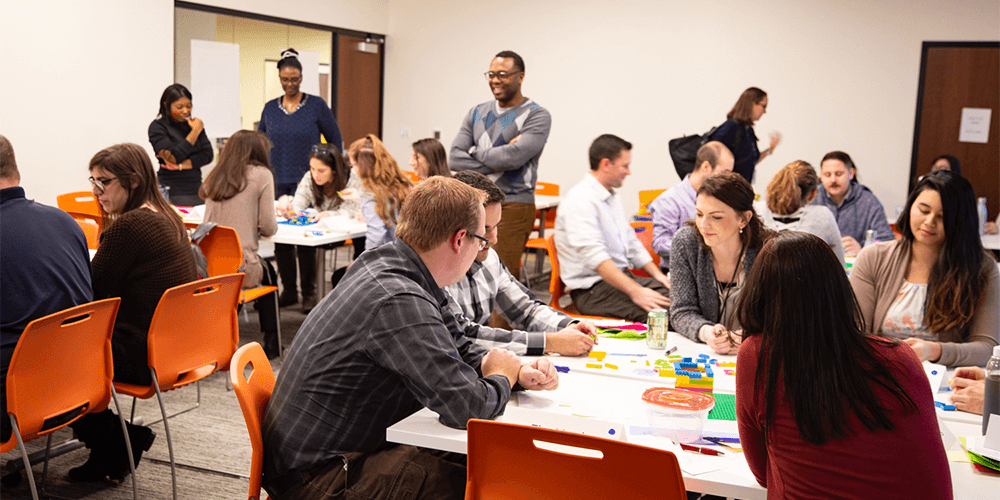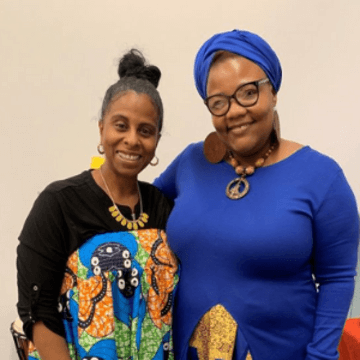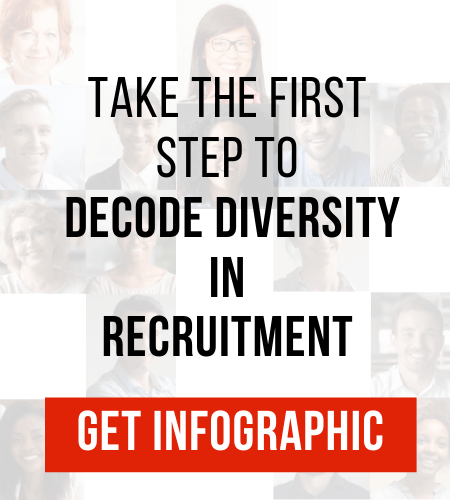- Solutions
- Products
- Community
- Resources
- Company
Create incredible candidate experiences that communicate your brand, mission, and values with recruitment marketing solutions.
Learn moreCommunicate effectively and efficiently with the candidates that can drive your business forward.
Learn moreSelect the right candidates to drive your business forward and simplify how you build winning, diverse teams.
Learn moreHelp your best internal talent connect to better opportunities and see new potential across your entire organization.
Learn moreCommunicate collectively with large groups of candidates and effectively tackle surges in hiring capacity.
Learn moreAccess tools that help your team create a more inclusive culture and propel your DEI program forward.
Learn moreRebound and respond to the new normal of retail with hiring systems that are agile enough to help you forge ahead.
Learn moreAccelerate the hiring of key talent to deliver point of care and support services that meet and exceed your promise of patient satisfaction.
Learn moreAttract and engage candidates with technical competencies, accelerate hiring for much-needed skills, and advance expertise within your valued workforce.
Learn moreSimplify how you recruit finance, insurance, and banking candidates with a unified platform built to match top talent with hard-to-fill roles.
Learn moreYour business strategy depends on your people strategy. Keep both in lockstep with the iCIMS Talent Cloud.
Learn moreBuild an engaging, high-converting talent pipeline that moves your business forward.
Learn moreDeliver the innovation your talent team needs, along with the global scale and security you demand.
Learn moreDeliver tailored technology experiences that delight users and power your talent transformation with the iCIMS Talent Cloud.
Learn moreThe #1 ATS in market share, our cloud-based recruiting software is built for both commercial and large, global employers.
Learn more Talk to salesAttract the best talent for your business with powerful, on-brand career websites that excite candidates and drive engagement.
Learn more Talk to salesCombine behavior-based marketing automation with AI insights to build talent pipelines, engage candidates with multi-channel marketing campaigns, and automatically surface the right talent for the job.
Learn more Talk to salesEmpower candidates with automated self-service, qualification screening, and interview scheduling through an AI-enabled digital assistant.
Learn more Talk to salesSimplify employee onboarding with automated processes that maximize engagement and accelerate productivity.
Learn more Talk to salesVerify skills with game-changing levels of automation and simplicity to improve the quality of hire at scale.
Learn more Talk to salesModernize, streamline, and accelerate your communication with candidates and employees.
Learn more Talk to salesTransform the talent experience by showcasing your authentic employer brand through employee-generated video testimonials.
Learn more Talk to salesSimplify recruiting, dynamically engage talent, and reduce hiring bias with job matching and recruiting chatbot technology.
Learn moreStreamline and centralize your HR tech stack with configurable, flexible, secure and reliable integrations.
Learn moreHow a beloved restaurant hires 40,000+ annually with a great candidate experience.
Learn moreThousands strong, our global community of talent professionals includes creatives, innovators, visionaries, and experts.
Learn moreTogether we’re creating the world’s largest ecosystem of integrated recruiting technologies.
Learn morePartner with our global professional services team to develop a winning strategy, build your team and manage change.
Learn moreExplore our network of more than 300 certified, trusted third-party service and advisory partners.
Learn moreUncover unique market insights, explore best practices and gain access to talent experts across out library of content.
Get resourcesExpert guidance about recruitment solutions, changes in the industry, and the future of talent.
Learn moreStay up to date with the latest terminology and verbiage in the HR software ecosystem.
Learn moreEmployers everywhere improve hiring efficiently and save money using iCIMS. Estimate the potential business value you can achieve.
Learn moreDive into the Class of 2023 Report highlighting this cohort’s expectations and where employers are willing — and able — to meet them.
Watch nowPartner with iCIMS to build the right strategies, processes, and experience to build a winning workforce.
Learn moreExpert guidance about recruitment solutions, changes in the industry, and the future of talent.
Learn moreDeliver the innovation your talent team needs, along with the global scale and security you demand.
Learn moreView press releases, media coverage, and the latest hiring data. See what analysts are saying about iCIMS.
Learn moreiCIMS is the Talent Cloud company that empowers organizations to attract, engage, hire, and advance the talent that builds a winning workforce.
Learn moreGet to know the award-winning leadership team shaping the future of the recruiting software industry.
Learn moreWe believe the future of work isn't something that "happens" to you. It's something you create. We actively create the future of work with our customers every day.
Learn moreiCIMS is committed to being a responsible and ethical corporate citizen, which is why Environmental, Social and Governance (ESG) initiatives are strategic imperatives.
Learn moreStreamline your tech stack and take advantage of a better user experience and stronger data governance with ADP and the iCIMS Talent Cloud.
Learn moreThe combined power of iCIMS and Infor helps organizations strategically align their business and talent objectives.
Learn moreOur award-winning partnership with Microsoft is grounded in a shared desire to transform the workplace and the hiring team experience.
Learn moreOur partnership with Ultimate Kronos Group (UKG) supports the entire talent lifecycle by bringing frictionless recruiting solutions to UKG Pro Onboarding.
Learn moreLet’s get in touch. Reach out to learn more about iCIMS products and services.
Learn more

“When it comes to diversity and inclusion initiatives – where do you even begin?”
I asked this of Chinor Lee, associate director of culture, belonging, inclusion, and diversity (CBID) at iCIMS. He laughed – and rightfully so – and joked that when he figures it out, he’ll write the book on it. I imagine he would then take up permanent residence on the island of Capri.
“There are many ways in which we are diverse that it’s difficult to prioritize this level of diversity over another one,” Lee explained. “You can look at demographics you can see with your eye – race, ethnicity, and gender – but it goes deeper than that. You can’t see some disabilities or someone’s sexual orientation with your eye. Diversity represents the totality of our experiences.”
In other words, you’re unique because of the traits you’re born with, the choices you’ve made, and the experiences you’ve had. It reminded me of a Forbes column by Nafisa Bakkar, in which she said that “people don’t fit neatly into tick boxes,” so trying to wrap your arms around diversity through demographics is a flawed premise.
“I don’t know how you can look at the various dimensions of diversity without getting overwhelmed, and in order for us to really move the needle and get the work done, it can’t just be women and underrepresented professionals,” Lee added. “If we move forward with a broader definition of diversity, then we can be more productive, collaborative, creative, and profitable.”
Lee’s approach is to celebrate everyone for the diversity they bring to the table. It’s inclusive.
Which brought me to my next question: What role should employers play in creating a diverse, inclusive environment?


The answer to my question on an employer’s responsibility for diversity and inclusion (D&I) came from Amber Brown, product solutions manager at iCIMS.
“Oh, I can talk about this one for HOURS,” exclaimed Brown, who is a founding member of iBelong, a D&I ERG. “Essentially, it comes down to that the way the world has evolved, we have seen a shift, where the employer’s purpose is more than profit. It’s a responsibility to its people and to its community.”
This expanded role for employers comes from the Business Roundtable, an association of CEOs from leading U.S. companies (and many, iCIMS customers). The group released its new statement on the purpose of a corporation a year ago, in which 181 of the CEOs “commit to lead their companies for the benefit of all stakeholders – customers, employees, suppliers, communities, and shareholders.”
These modernized principles reflect what we always knew: If you take care of your people, they’ll take care of your customers. This complements Chinor’s CBID approach, that leads with empathy to celebrate everyone for who they are. (Learn more about how to balance profit with purpose.)
It also denounces the old school mentality that organizations are only responsible for turning a profit, which, as Chinor noted, “was sometimes at the cost of the people.” Don’t get me wrong – business is still about profit – but to generate long-term value, it is critical to invest in your people. One of these fundamental commitments, as stated by Business Roundtable, is “to foster diversity and inclusion, dignity, and respect.”
We are more aware of how our behaviors impact the making of an inclusive work environment. But is there a risk of diversity and inclusion being buzzwords that leaders put out there to remain relevant? Lee and the iBelong group realize this concern, however they are optimistic that leaders see it not as a trend, but a new way of doing business. A constant conversation and commitment.
“There’s no blueprint to creating a diverse organization,” said Jillian Colon, marketing program manager and one of iBelong’s founding members at iCIMS. “There are trials and tribulations, uncomfortable conversations to be had, but you try to remain consistent, and it becomes a pillar of the organization. That’s a win.”
Here’s how to begin:
1. Start at the top. Define what diversity and inclusion mean to your organization. Consider a wider definition that brings in everyone. This vision becomes a reality when leadership invests, owns, and believes it, Brown said, which, in turn, “creates an environment where people feel they can speak up and contribute.”
One way that leadership can start to own this vision is to take on the mentorship of those who are different from them.
“You don’t have to have the same experiences to relate and have empathy,” said Natasha Daniels, Technical Product Manager and founding member of iBelong at iCIMS.
2. Make it part of your company’s strategy. Long-term success relies on infusing D&I into strategic initiatives.
“If Diversity, Equity and Inclusion sit outside of and is separate from the all up business strategy, it just won’t work; DEI must be infused across the organizations key business strategies in order to be effective,” explained Julissa S. Germosen, manager of strategic partnerships and Senior Advisor of iBelong at iCIMS.
Instead, move beyond a box to be checked to accountability for all, no matter their title. Read more here about how to maintain momentum with the right D&I goals.
3. Get the resources to see it through. One of the questions I asked iBelong was: Is there a risk of ERGs being pressured to “fix” D&I at their organizations – good intentions or otherwise? To avoid this, recognize that your diverse employees should not be put in a position to take on D&I issues unless it is part of their core role.
“Employees may be willing and passionate about taking on responsibilities for D&I initiatives, but it won’t scale and isn’t a long-term solution,” Germosen said.
For appointed D&I changemakers, look at how your current organization can implement change properly: “It’s a mistake to have (these changemakers) conform to heavy processes that can be a hindrance to progress,” Daniels said.
Next up is investment in training. At iCIMS, Lee works with the management team on a three-part training framework: Get curious, get comfortable, and get collaborative. It begins with space to get curious concerning how you feel about an uncomfortable situation and ways to validate someone’s feelings. To get comfortable is to listen actively with an empathetic ear and refrain from judgment, so you then can get collaborative and find ways for them to be included.
4. Involve internal stakeholders to transform the talent journey. Bring in all internal stakeholders to have candid conversations about how you engage, attract, hire, and advance diverse talent.
“The talent piece can be an awkward look in the mirror, but it’s the most important piece,” Colon said.
Map out the entire talent journey and identify points that contradict your D&I goals. This may mean pivoting away from sourcing talent from only local universities or recognizing that a manual screening process has inherent bias. Accessibility in the application process is another often-overlooked factor that can lock out diverse talent. (Click here for more about why accessibility matters in your hiring software.)
For many, this also means an opportunity to leverage mobile recruiting software that aids to inclusive communication. Virtual career fair platforms remove location, accessibility, or travel barriers. Candidates can apply through text and engage with a 24/7 chatbot to accommodate their schedules time zones, and preferred language.
To repeat Colon’s previous remarks, no blueprint exists for creating a diverse organization, but if you take the steps to make it part of your company’s purpose and are willing to ingrain it into your day-to-day culture, accountability then rests on everyone’s shoulders.
A more productive, profitable, and happier organization is the result, however we need to have the uncomfortable conversations that we always were taught never to have at work.
“The worst thing you can do is not say anything, but that’s worse than saying the wrong thing,” Lee said. “It’s not going to be easy, it’s not going to be comfortable, but we’ve avoided talking about it before, and where has that gotten us?”






